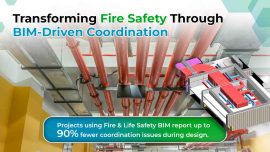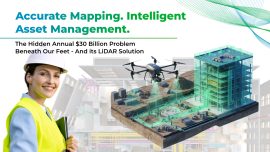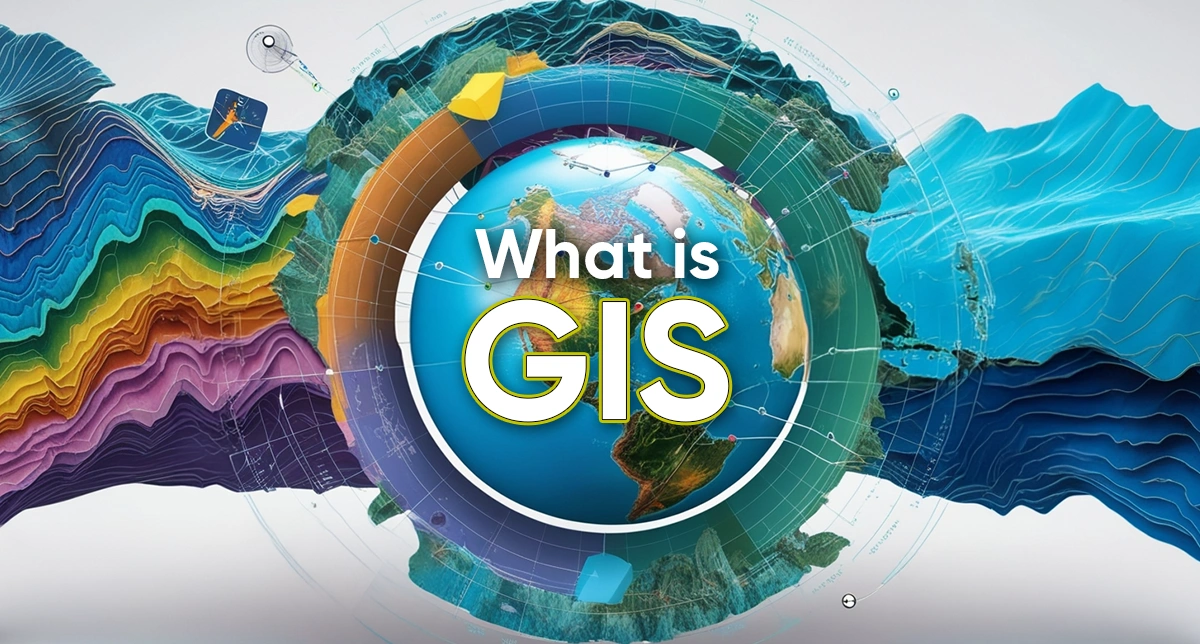
A Geographic Information System (GIS) is a specialized computer system that captures, stores, analyzes, and displays geographically referenced information. Traditional maps pale in comparison to GIS, which connects location data with descriptive information. This connection creates a powerful tool that reveals patterns, relationships, and geographic context that might otherwise remain hidden.
Clear Definition and Understanding of GIS Mapping
GIS mapping lets users see spatial data through dynamic, interactive maps. Users can layer different types of information on a single map, which showcases GIS’s true power. A GIS map displays streets, buildings, and vegetation at once, so users can analyze how these elements interact.
Location serves as the key index variable in GIS, making it possible to connect previously unrelated information. Organizations can make informed decisions about resource management, urban planning, and disaster response with this integration. GIS processes many data formats including cartographic data, photographic data, and digital information from satellites.
GIS technology forms the foundations of mapping and analysis in nearly every industry. Users can understand complex geographic questions visually, which makes GIS essential for strategic planning in both public and private sectors.
History and Evolution of GIS

Maps have existed for thousands of years, starting with ancient Babylonian and Greek civilizations that created basic maps to navigate and manage land. The real breakthrough in spatial analysis came in 1854 when Dr. John Snow mapped London’s cholera cases and found that water, not air, spread the disease.
From Traditional Maps to Modern GIS Platforms
Roger Tomlinson, the “Father of GIS,” created the Canadian Geographic Information System (CGIS) in the 1960s, marking GIS’s official beginning. Three key tech advances paved the way for modern GIS: line printers that could output map graphics, better data storage, and mainframe computers with increased processing power.
The Harvard Laboratory for Computer Graphics played a crucial role in GIS’s progress by creating ODYSSEY, the first vector GIS, in the mid-1970s. Jack Dangermond studied at Harvard and later started Esri, which grew to become the world’s biggest GIS software company.
GIS became mainstream as computers got cheaper and more powerful through the 1980s-90s. Landsat and GPS satellite systems dramatically boosted data collection capabilities.
By 2010, Esri had reached 1 million licensed software users across 100,000 organizations, and the GIS market was worth $7 billion.
How Does Geospatial Information System Technology Work?
GIS works through a methodical way of handling geographic data. The original system collects data from many sources and creates a foundation for spatial analysis that answers complex location-based questions.
The Fundamentals of GIS Technology
GIS combines location data with descriptive information at its heart. Users can understand patterns, relationships, and geographic context. The process follows a well-laid-out workflow. Users frame questions, prepare data, examine information visually, run spatial analysis, and share results.
The system needs to arrange information from many sources on a common scale and projection. This process often needs data adjustments to resolve different map projections. These projections transfer information from Earth’s curved surface to flat displays.
GIS uses two main data structures: vector (points, lines, and polygons for discrete features) and raster (gridded cells for continuous data like elevation).
These structures let users perform operations such as:
- Extracting and overlaying geographic information
- Calculating statistics and aggregating data
- Modeling relationships and finding patterns
Location serves as the ‘key index variable’ that connects seemingly unrelated information. Organizations can visualize real-life features, spot patterns, analyze changes, and turn raw data into practical insights that support sound decisions.
Streamline Your Workflow with Our BIM Solutions
Components of a GIS System
A working GIS infrastructure needs five basic elements that work together to deliver powerful spatial analysis capabilities.
Key Elements: Hardware, Software, Data, People, and Workflows
Hardware makes up the physical foundation of any GIS mapping system. It covers high-powered workstations that can handle complex processing, large monitors for clear visualization, fast network connections, and enough storage space for big datasets.
Software acts as the brain that runs everything and provides tools for data handling, storage, analysis, and visualization. The system has specialized GIS applications, database management systems, and tools that let users run geographic queries easily.
Data stands as the most valuable piece of the puzzle that makes GIS truly useful. Raw information comes from many sources and gets stored digitally for analysis.
People play a crucial role in GIS success, though many overlook this fact. The core team of technical experts who design systems and regular users help accept new ideas and put them to practical use.
Workflows tie the whole infrastructure together by creating clear paths for GIS operations. These standard processes make both GIS and non-GIS work simpler. Users can repeat tasks reliably and make fewer mistakes.
These five pieces work as one unit to create a complete infrastructure mapping system. Each part must work well for the GIS infrastructure to deliver results.
Types of GIS Data
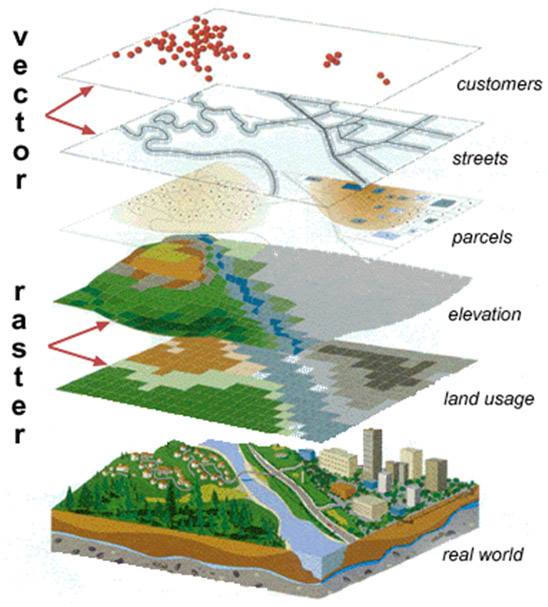
GIS data classification has two main categories: vector and raster formats that serve different purposes in infrastructure mapping.
- Vector data shows geographic features through geometric basics: points (cities, landmarks), lines (roads, rivers), and polygons (lakes, land parcels). Points exist without dimensions and show separate features. Lines only measure length and display linear elements like streets or trails. Polygons measure both perimeter and area of features like boundaries since they are two-dimensional.
- Raster data works like digital photographs with pixels (cells) arranged in grids. Each cell has specific values that show information such as elevation, temperature, or land cover. Raster formats come in two types:
- Continuous rasters: Cell values change gradually for elevation or temperature
- Discrete rasters: Cells belong to specific themes or classes with clear boundaries
Remote sensing data captures electromagnetic energy that Earth’s surface reflects through sensors on drones, aircraft, or satellites. This gives us a global viewpoint and helps make data-driven decisions.
GPS data combines smoothly with GIS and lets users collect accurate position information. GPS receivers find locations by triangulating satellite signals, which enables exact mapping.
ArcGIS works with many data formats, including shapefiles, geodatabases, LiDAR, and more than 70 other formats through the ArcGIS Data Interoperability extension.
Common Applications of GIS
GIS provides practical solutions in a variety of sectors and changes how organizations handle space-related challenges.
Urban planning teams use GIS to make detailed decisions by analyzing land use patterns, population density, and environmental constraints to develop sustainably. City planners employ this technology to design road networks, optimize facility placement, and rejuvenate urban areas like San Antonio’s Broadway Corridor.
The utility sector relies heavily on infrastructure GIS to manage electric grids, water systems, and gas networks. Electric utilities employ GIS to predict weather-related disruptions, inspect power lines, and optimize crew scheduling. These changes have streamlined processes significantly. FirstEnergy operates in five states and blends GIS with Advanced Distribution Management Systems to get live network updates.
Construction projects benefit from GIS through geological data evaluation, resource management, and environmental impact assessments. Teams can visualize projects in geographic contexts and analyze factors like traffic patterns and soil properties before breaking ground.
GIS technology is a great way to get risk assessment and emergency management data for disaster response. The Disaster Response Program handled 20,000 requests in just 120 days during the COVID-19 pandemic, more than its entire 26-year history. This technology also helps quickly map affected areas and optimize evacuation routes and resource allocation during crises.
GIS Tools and Software
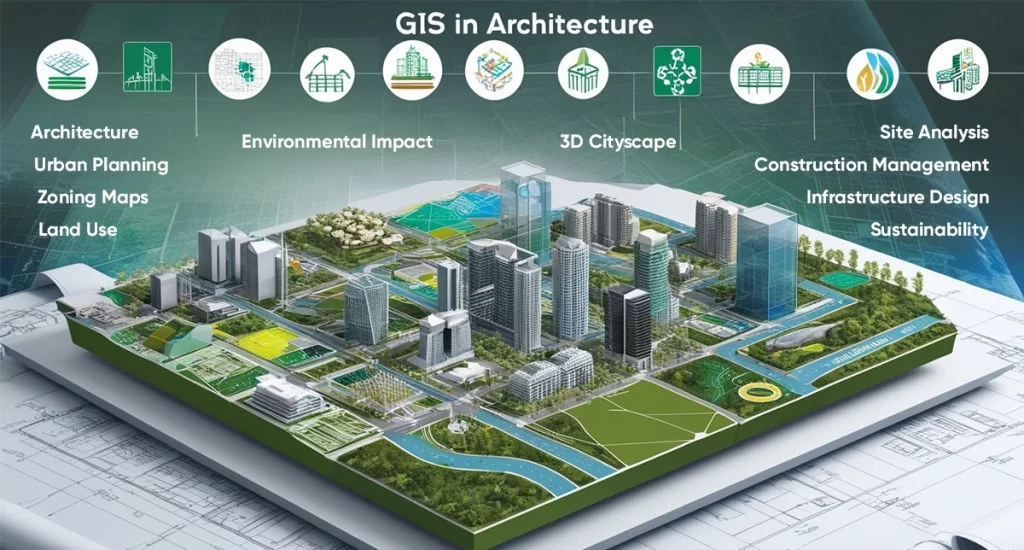
GIS software comes in many shapes and sizes to help map infrastructure needs.
A Comparison of ArcGIS, QGIS, GeoServer, and Other GIS Tools
- ArcGIS leads the commercial market with its advanced analysis, cartography, and editing features. This powerful tool creates detailed maps and works smoothly with CAD, Oracle databases, and web services. Users should know that ArcGIS’s impressive capabilities come with significant licensing costs.
- QGIS rules the open-source world and matches many features of paid alternatives. This free tool is a great match for users who need customization options thanks to its extensive plugin support. The software can handle more than 70 vector formats through its GDAL/OGR library, which shows how versatile it is.
- GeoServer shines at sharing geospatial data in various formats. This most popular open-source geospatial server supports over 40 extensions plus experimental modules. The software excels at serving data through standard protocols that the Open Geospatial Consortium has set.
Other specialized tools add to the mix. GRASS GIS provides advanced geoprocessing features, while GeoDa focuses on statistical analysis and spatial modeling. Your budget, specific requirements, and personal preferences will guide you in choosing the right infrastructure GIS tools.
GIS vs CAD vs BIM
GIS, CAD, and BIM systems serve distinct purposes in design and spatial analysis, yet they complement each other more than ever in modern infrastructure projects.
Understanding the Differences and Synergies Between GIS, CAD, and BIM
These three technologies have fundamental differences in their focus and application.
- GIS excels at managing location-based data and emphasizes spatial analysis and geographic context. Urban planners and environmental managers use it extensively for decision-making.
- CAD focuses on precision design and detailed drawings. We used it for engineering, architecture, and construction projects.
- BIM goes beyond simple design to create data-rich 3D models. These models contain detailed information about buildings’ physical and functional aspects throughout their lifecycle. Each system’s data structures have unique characteristics.
GIS uses geographic coordinate systems with location-based structures.
CAD relies on Cartesian coordinate systems that suit drafting precision. These technologies operated on parallel tracks with different file formats and optimized workflows. Now they show greater integration.
This technological meeting point brings substantial benefits. Combining CAD/BIM precision with GIS spatial context helps professionals visualize projects in accurate real-life geography.
This improves analysis and decision-making during original planning and permitting phases. Companies like Esri and Autodesk have created strategic collaborations to connect these technologies. Infrastructure professionals can now add geographic context to their designs effectively.
Advantages of Using GIS
GIS infrastructure brings many advantages to organizations of all types and reshapes how they handle spatial challenges.
Benefits for Spatial Analysis, Planning, and Decision Making
- Enhanced Decision Making is the most valuable benefit of GIS technology. GIS reveals hidden connections, patterns, and relationships by showing complex spatial data visually. Organizations can combine information smoothly from multiple business systems and authoritative sources, which makes their data much more useful.
- GIS excels at solving complex location-oriented problems because users can study places and their relationships. This helps planners find suitable areas to develop, create better transportation networks, and understand environmental impacts through detailed spatial analysis.
- GIS provides a great way to get resource management insights by evaluating land suitability based on factors like soil type, slope, and distance to infrastructure. This feature helps identify the best areas for agriculture, residential development, or conservation without doubt.
- GIS makes community engagement easier by collecting resident feedback in location-based formats. Planners can use this engagement data as GIS layers with minimal processing, which makes public participation more effective. Some communities have redistributed resources after GIS data showed major gaps in health-care access among different racial/ethnic groups.
From city planning to protecting the environment, GIS infrastructure management gives organizations what they need most: knowing how to turn raw geographical data into useful insights that support better decisions.
How to Get Started with GIS
Starting a GIS trip needs careful planning and the right resources. Your success depends on a well-laid-out approach that tackles both technical and organizational needs.
Steps to Start Using GIS in Your Projects
GIS infrastructure setup follows a clear path:
Project Planning – Set your objectives, scope, and deliverables first. Get a full picture of technical, financial, and operational viability before you create a detailed project plan.
Data Preparation – Find your existing data sources and gaps, then gather new data through surveys, remote sensing, or digitization. Verify all data accuracy before you process it.
System Setup – Pick the right GIS software based on your needs. New users should think over user-friendly options that are easy to learn. Set up databases and tailor applications to match your specific needs.
Training – Put time into good training through online resources like Esri’s Learning Portal that offers self-paced courses on basic concepts. Universities provide GIS courses that blend theory with hands-on practice.
Data Integration – Load your existing datasets into your GIS system and link them with external data sources.
Testing – Run complete pilot tests in controlled settings before you roll out the full system.
Good GIS planning is a vital investment any organization can make. Once your system runs, you can grow its capabilities with regular updates that exploit new technology.
Conclusion
GIS plays a transformative role in the Architecture, Engineering, and Construction (AEC) industry by embedding spatial intelligence into planning, design, construction, and post-construction phases. It enables professionals to analyze terrain, infrastructure, land use, environmental impact, and utility networks—all within a geospatial framework—before making critical project decisions. This reduces design conflicts, minimizes construction delays, and ensures regulatory compliance.
By integrating with CAD and BIM platforms, GIS enhances collaboration among architects, engineers, urban planners, and contractors, ensuring that every stakeholder operates with a shared understanding of the project’s geographic context. It supports tasks such as optimal route planning, site suitability analysis, 3D terrain modeling, and real-time construction monitoring.
Moreover, GIS aids in lifecycle asset management by tracking infrastructure performance, planning maintenance schedules, and improving resilience against natural hazards. As cities move toward smarter infrastructure and data-driven planning, GIS is emerging as a core enabler of sustainable, efficient, and future-ready AEC solutions.







